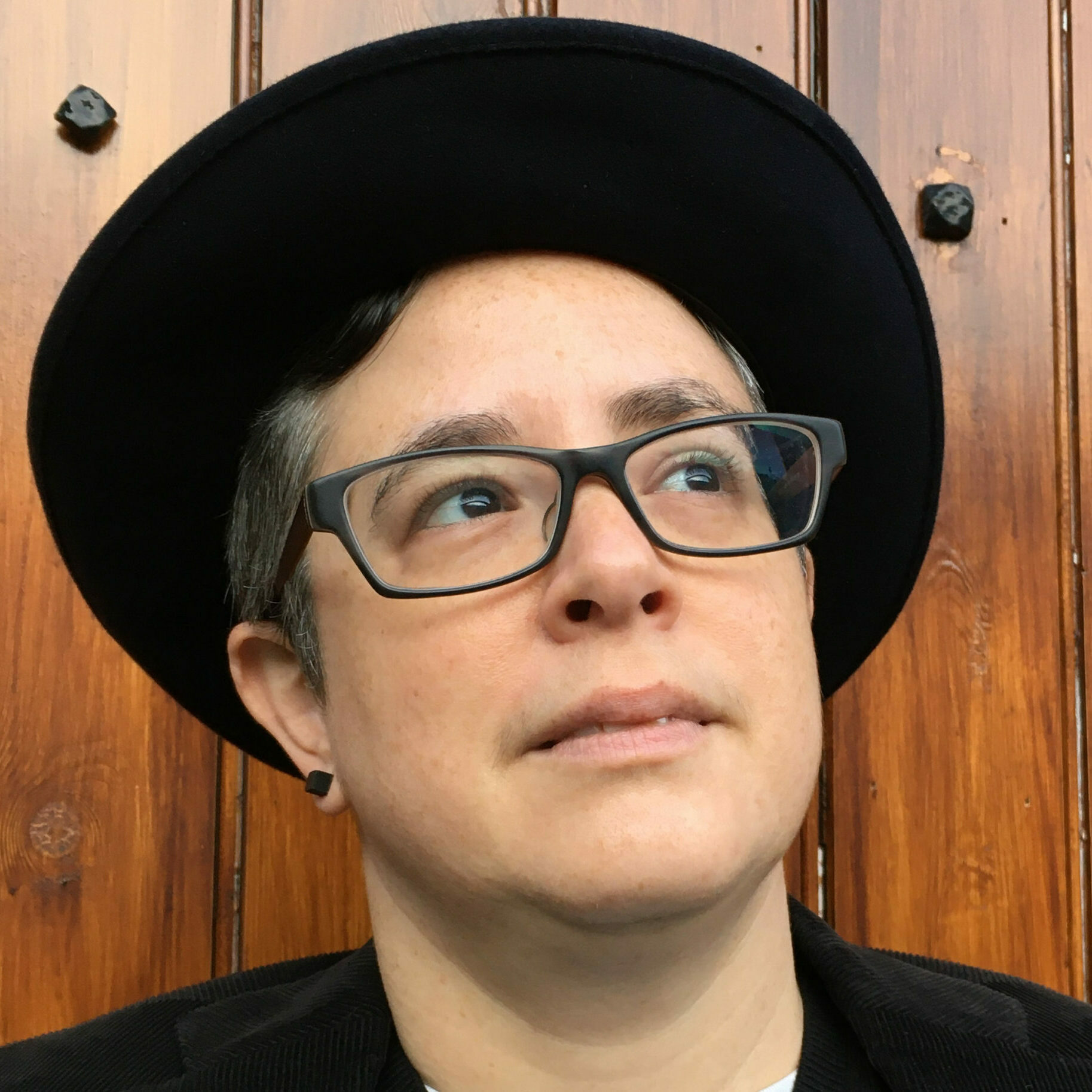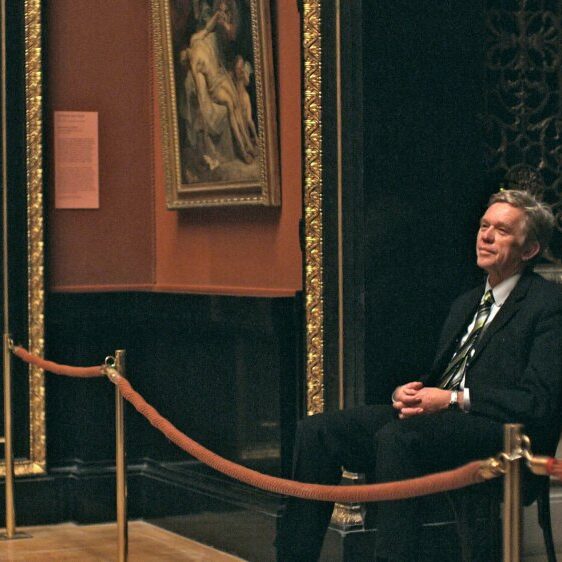This essay first appeared in Sight & Sound, 23.9 (September 2013).
*
Over the end credits of Jem Cohen’s latest film, Museum Hours, an acoustic guitar track – haunting, unresolving – plays. It’s an instrumental version of a song by US singer-songwriter Liz Durrett, niece of Cohen’s long-time collaborator and friend Vic Chesnutt, who died in 2009. The song is called “Stop the Projector,” and the song’s placement at the end of the film is both witty and profound. Its equation of the disappearance of the image and death – that if we are not seeing, we are not being – runs through the whole film.
In a celebrity culture in which being seen is being, Cohen’s work with musicians such as REM, Godspeed You Black Emperor, Patti Smith, Elliott Smith, and Fugazi, as well as Chesnutt, imagines otherwise. As Michael Almereyda notes in his interview with Cohen in Artforum in 2005, for many viewers the most striking moment in Instrument (1999), his Super-8 Fugazi tour documentary, comes not from seeing the band onstage, but from the series of portraits of fans queuing for the shows. Spectral, almost feral, these portraits of people waiting-to-see – being seen in their desire to see – are a keynote of Cohen’s art.
In Museum Hours, as in his first narrative feature Chain (2004), Cohen casts non-professional actors in the film’s three speaking roles. Johann, the film’s witness protagonist and voiceover narrator, is played by Bobby Sommer, whom Cohen met through the Viennale, where Sommer works in guest relations, and whose life story (managing punk bands) informs Johann’s. By contrast, Anne, a visitor to the Vienna Kunsthistorisches Museum where Johann works, is played by Mary Margaret O’Hara, the notoriously publicity-shy Canadian singer. Like the UK’s Kate Bush, O’Hara resisted the music business’ expectations as to how she would perform herself as a female celebrity; as a result, her face and voice will be unfamiliar to many of the film’s viewers. The two songs she sings in the film are her first original material recorded since 2000. The tangential location of both Sommers and O’Hara in relation to the music/fame business, and their option to remain independent of it, underlines their unusual performances – or perhaps, appearances – in Museum Hours, as they explore looking as well as being looked at.
When we first see Anne (who is only named in the credits), it is only the back of her head as she talks on the phone; her profile and full face are revealed slowly, over many scenes. The shift is repeated, finally, in her final scenes before leaving Vienna and the film: as she sings to herself, we see only the back of her head, before there is a cut to a profile. Cohen has a singular gift for the non-intrusive gaze, for making his act of looking as a filmmaker something that exactly reveals, rather than commodifies. His filmmaking practice is rooted in street photography, which, as Colin Westerbeck points out in the monumental history that he edited with photographer Joel Meyerowitz, is a genre unique to camera technology. Westerbeck emphasises instantaneity, but Cohen’s move to film underlines another key quality: anonymity. Both the photographer and the subject are anonymous, to each other and to the world at large – yet, paradoxically, achieve a kind of known-ness (to each other, and to the viewer of the picture) through the action of making the photography.
Fascinated by the face in the era of photography, philosopher Giorgio Agamben wrote that, “The face is the only location of community, the only possible city.” It is this sense of shared identity rooted in looking that Cohen brings forth. The film opens with an artful shot of Johann framed by the mighty oak door behind him, and roped off like the paintings. Later, he described his job as “looking at the visitors.” Both the shot and the statement productively undermine the looking relations that museums appear to set up: art hangs; visitors look at it; guards surveill their behaviour. For both visitors and guards, the art is inert and framed by its monetary value. Instead, Cohen presents Johann as a framed art object for our contemplation, and simultaneously makes him active, looking back at us, the viewers. Rather than paranoid surveillance, he is both a practised observer showing us how to look, and a guardian angel: noticing, for instance, the student who might shyly linger behind his school group to look at the erotic contours of a classical male nude.
This work of noticing, of being alive to what he sees, leads him form the relationship that drives the film, offering assistance to flustered Montréaler Anne, in Vienna to attend the bedside of a comatose cousin. Anne and Johann’s fleeting connection is reminiscent of Cohen’s previous feature, Chain, where the title metamorphosed from describing the economic and linguistic barriers between the two female protagonists to the fragile possibility of connection between them. Anne and Johann’s names echo those of SS. Anne and Joachim, the parents of the Virgin Mary. Saint Anne’s emblem, as patron of pregnant women, is a door, that paradoxical site of entry and exclusion: through his interaction with Anne, the door that Johann appears to guard in the film is slowly revealed as open. From the classical, passive framing of Johann at work, the film opens up the museum: as well as skateboarders outside the windows, there are headscarved women cleaning the stairs; in one sequence, museum visitors become as naked as Lucius Cranach’s Adam and Eve.
Johann and Anne’s friendship begins with his explanation of a map of the city, but progresses through looking at paintings, connecting what’s inside and outside the museum. Museum Hours arrives on UK screens at a moment when such distinctions are being challenged, with street photography finding a home in museums, particularly Tate Modern, with its exhibitions on surveillance, and of the work of William Klein and Daido Moriyama. Rather than hanging photographs in the museum, the film practises street photography in the Kunsthistorisches’ hushed chambers, and cross-cuts between the museum and the streets – particularly two sequences of flea markets – with equal regard. Like Agnès Varda in Les Glaneurs et La Glaneuse, Cohen does not so much juxtapose classical art and marginal urban life as reconnect them; while Varda used the practice of gleaning as both subject and metaphor for her film, Cohen roots that connection in the paintings of Jan Brueghel the Younger, who is described in the film as having disguised himself as a peasant in order to paint their lives.
As well as providing a genealogy for the themes (if not the instantaneous practice) of street photography in Brueghel’s vivid ‘snapshots’ of lived experience, the paintings are the subject of a centrepiece discussion by lecturer Gerda, who firmly leads her tour group to perceive the world differently, to look at the horse’s ass instead of acting like one. Taking their pat, presumptive answers about Brueghel’s greatness, piety and timelessness, she leads them – and us – to take time with the pictures, and to see time in them: Brueghel’s time, our time, and the unfolding of time itself. This is the ‘scenic route,’ as Johann wryly names his toilet directions for annoying museum visitors. Implied in his phrase is the visitors’ hurried lack of looking, both for signage and at the artworks, and an invitation for the viewer to practice the contrary.
As with Chain, the title of Museum Hours alters and expands – as Johann moves his job description – from meaning a set of imposed limitations and rules on access to high culture, to suggesting the dilation of time made possible by what the museum saves from time, the time it asks us to spend in looking. At the end of the film, Johann describes, in voice over, a series of Super-8 images, their near-square 1.33: 1 aspect ratio centred within the thick black borders of the film frame. At first the viewer presumes these to be restagings of unseen paintings, but as the images become more firmly located in Vienna and the present, it is clear that Johann is – somehow – watching the film we are seeing. While voice-overs are frequently used in documentaries to direct the viewer, it is a beautifully democratic gesture to locate the voice-over speaker as a member of the audience, someone watching the film as we are. The final shots show, as Johann describes, “a store that once housed a locksmith, but now has orange plastic in its window,” like the gatekeeping institution of the museum that now includes film, photography, installation and found art; and a junk shop, “that is by some strange decree… only open between four and six.” Cohen’s longstanding interest in artists and art classified in marginal, found and outsider reframes the Kunsthistorisches as a junk shop with odd opening hours, a site for strange discoveries, itself an artwork in the frame.
Throughout the film, Cohen raises questions about the ownership of art and its meaning. These closing shots of Vienna’s streets, like several in the film, occur from canted angles and with a fixity reminiscent of CCTV cameras, a pervasive surveillance humanised by Cohen’s approach. Control of the image is re-democratised; the film’s shots of museum visitors using camera phones and audio guides are documentary rather than judgemental, as of people at the flea market trying on shoes in the snow. Here, the film says, is a culture trying on new ways of looking: they are both disruptive and productive, necessary and uncomfortable. The sequences inside the museum were shot on digital, intercut with Super-8 exteriors: an experiment, an investigation into new technologies of vision, that marks Cohen’s hybrid, punk style.
Yet the film also locates this experimentation in the classical painting that Anne and Johann first discuss: one of the Kunsthistorisches’ four flower still life studies by Jan “Flower” Brueghel, father of the better-known “peasant painter.” Hesitantly, Anne reads from the text panel next to the painting, her vision moving back and forth between the two, that the elder Brueghel was the first to paint one flower stem in front of another, a visual practice and metaphor that could describe Museum Hours’ insistence on seeing everything in relation rather than hierarchy or separation.
She also notes that the foremost flower is a black mourning iris: a powerful verbal play on the film’s gaze, out of eyes dark with looking at poverty, illness and death, in the hospital, the street but also – as a montage of severed head paintings shows – the museum. At the end of the film, as Anne looks out the window in a pose similar to the opening shot, she sings that “in the darkness, you’ll see so clearly.” This is the film’s manifesto for cinema, but beyond that, for ways of looking. Although she looks the same, Anne’s looking has been altered profoundly by her friendship with Johann during her cousin’s coma and death; alive with all she has seen, she comes into view just in time to disappear.

